
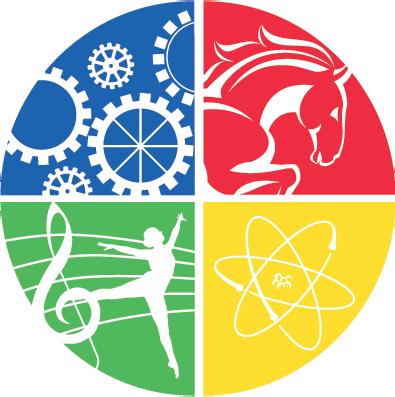







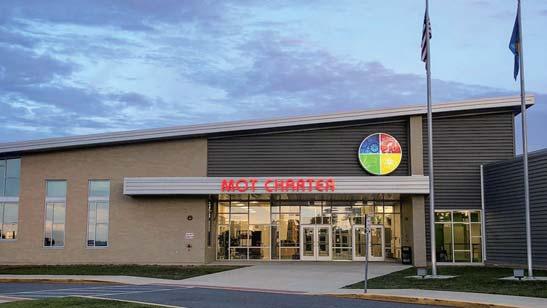

EMAIL: Ned.Southworth@mot.k12.de.us

The faculty and sta at MOT Charter strive to provide an environment which allows our students to reach their full academic and personal potential. We believe that when students have the ability to explore interests, see value in asking questions and take risks they learn to see themselves as an important member of the larger community; where willingness to get involved leads to making a positive impact.
The college preparatory program is designed to be rigorous and thought provoking. For students to succeed in postsecondary education and/or their career they need to have the skill set to be problem-solvers, strong communicators and find the value and joy of being a lifelong learner. Our faculty understands there are many ways in which students can learn and are trained to provide enrichment and support to all students. Extracurricular activities are oered to students to expose themselves to a variety of interests which allow them to discover or deepen their individual talents and interests.
This Curriculum Guide is provided to allow existing and prospective members of the MOT Charter High School community to make informed academic decisions. It is important to note that this information is subject to change at any time based on the needs of students and the school.
Our schedule is designed to provide students with a consistent learning environment by structuring the courses to run through the full academic year. Days are structured using an alternate block schedule, in which classes consists of four 90 minute periods four days a week, and one day each week focuses on community engagement and time for additional academic support. Benefits of this schedule are:
• Faculty see fewer students during the day, giving more time for instruction
• The increased span of teaching time allows for intensive learning activities to be completed during each class
• Students have more time for in-depth exploration, discussion and engagement over the course of a school day
• Preparing students to transition to post-secondary education with a schedule similar to many colleges
Please do not hesitate to contact us with any questions or concerns.
Best,
est,

EnglishIntegrated World Literature
MathIMP level based on placement test (IMP 1, IMP 2, or IMP 3)
ScienceIntegrated Science: Environmental Focus
Social StudiesCivics & Geography
World Language Level based on placement test (Spanish 1, Spanish 2, or Spanish 3)
State Requirements Physical Education (0.5 credit) AND Health (0.5 credit)
ARTS MajorsMarketing I or Digital Media I AND 1st studio class in major pathway1
STEM MajorsIntroduction to Computer Programming AND Engineering & Design 1
EnglishBritish Literature & Composition
MathIMP based on prior class level (IMP 2, IMP 3, IMP 3/4 [2 credits] or IMP 4)
ScienceIntegrated Science: Biology Focus (1 credit) OR AP Biology (2 credits)
Social StudiesEconomics & Personal Finance
World Language Level based on prior class level (Spanish 2, Spanish 3, or Spanish 4)
State Requirements Driver’s Ed (0.25 credit) AND Physical Education (0.5 credit) AND PSAT/SAT Preparation (0.25 credit
ARTS MajorsMarketing II or Digital Media II AND 2nd studio class in major pathway
STEM Majors
Biotechnology
Computer Science
Engineering Biotechnology 1
AP Computer Science Principles
Engineering & Design II
ALL MajorsElective to fill 8 credit schedule
Incoming Freshman Only: High School Transfer Credits Transfer Credit will be honored for high school level courses previously taken and awarded grades of C or higher from other accredited middle school programs. Grades earned at another middle school are not made part of the student’s MOT Charter School transcript; rather, the credits will be considered only for transfer credit.
The high school course sequence is designed to not only prepare students for college or their chosen career, but also to provide opportunities for exploring their interests. Foundational knowledge is built through core courses and state requirements, while pathways and electives allow for deeper learning in various subjects. All students have access to accelerated math courses and the chance to earn college credits through Advanced Placement (AP), Dual Enrollment, or Early College courses. Note: Students must meet prerequisites and/or eligibility criteria to enroll in AP and Early College. Students must carry an 8-credit load each year, including four years of the core courses of English, Math, Science, and Social Studies. Before graduation, students must also complete 3-4 credits in a major pathway, 3 credits of world language, 1 credit of physical education, 0.5 credit of health, and 1 technology credit (Introduction to Computer Programming or Digital Business 1). All STEM majors must also take 1 credit of engineering. 1,2Arts majors must complete: Class of 2025/2026, 3 credits in Marketing - Class of 2027 and beyond, 2 credits in Marketing or Digial Media.
EnglishAmerican Literature OR AP Literature and Composition
MathIMP based on prior class level (IMP 3, IMP 3/4 [2 credits], IMP 4, or AP Calculus AB)
ScienceIntegrated Science: Chemistry Focus (1 credit) OR AP Chemistry (2 credits)
Social StudiesU.S. History OR AP U.S. History
World Language Level based on prior class level (Spanish 3, Spanish 4, Spanish 5, or AP Spanish)
ARTS Majors3rd studio class in major pathway2
STEM Majors
Biotechnology
Computer Science
Engineering Biotechnology 1I
Web Design with JavaScript OR AP Computer Science A
Engineering & Design III
ALL MajorsElectives to fill 8 credit schedule
EnglishWorld Literature OR AP Language and Composition
MathIMP based on prior class level (IMP 3/4 [2 credits], IMP 4, Statistics, Dierential Calculus, AP Calculus AB, or AP Calculus BC)
SciencePhysics Focus (1 credit) OR AP Physics (2 credits)
Social StudiesWorld History OR AP World History
World Language Level based on prior class level (Spanish 4, Spanish 5, or AP Spanish)
ARTS MajorsStudio class in major pathway OR Elective
STEM Majors
Biotechnology
Computer Science
Engineering Biotechnology 1II
Web Design with JavaScript OR AP Computer Science A OR Computer Science IV OR Elective
Engineering & Design IV OR Elective
ALL MajorsElectives to fill 8 credit schedule
• English credit: Course placement will be based on 7th and 8th grade SBAC testing scores. Students must have an SBAC credit: Course will be based on 7th and 8th SBAC scores. Students must have an SBAC ELA score of 4 to be placed into English 10 in their 9th grade year Students still have a four-year ELA requirement ELA score of 4 to be placed into English 10 in their 9th grade year. Students still have a ELA requirement.
• Math credit: Course placement will be based on a required placement test. Students still have a four-year math requirement.
• World Language: Course placement will be based on a placement test. Students still have a three-year World Language high school requirement, therefore if placed in Spanish 1 will need two additional courses, or if placed in Spanish 2, students will need one additional course. Students who have a non-Spanish transfer credit will need to take two years of Spanish.
This introductory course focuses on literary texts that represent diverse cultures and perspectives. Students will explore literature by reading and writing about fictional and non-fictional texts. Major assignments include argumentative essays, modern translations of classic literature, and the creation of lessons analyzing poetry. Additionally, students will be expected to give oral presentations and work in collaborative groups. 1
Credit
This course focuses on British texts that represent a variety of genres from both classic and modern sources. Classwork includes collaborative assignments, research, and literary analysis.1 Credit
This course focuses on a variety of American writers. Students read a wide variety of texts with universal themes and further develop analytical thinking skills and expand their writing skills. Major assignments include an MLA style research paper and literary arguments. 1 Credit
Course exposes students to a variety of literature written throughout the world including African, Asian, European, Latin American and the Middle Eastern texts. These texts, as well as essays, will challenge students to think critically about commonalities and dierences among geographic regions, cultures and historical developments. Major assignments include researchbased projects and literary analyses. 1 Credit
Students are exposed to the art of rhetoric as they annotate and analyze a variety of complex texts. Students will write analytical essays in various forms including narrative, expository, and argumentative. Major assignments include critical thinking activities and practice tests that prepare students to excel on the AP Literature and Composition Exam. 1 Credit
Students write on a variety of topics from personal experiences to public policies from imaginative literature to popular culture, while writing in a variety of forms: narrative, expository exploratory, and argumentative. As in the college course it models, the course’s purpose is to enable students to read complex texts with understanding and to write pose of sucient richness and complexity to communicate eectively with mature readers. 1 Credit
CALCULATE How many things you can try, to make your years here the best they can be!
Throughout this course, students will apply algebraic and geometric techniques to solve real life problems and create mathematical models. Topics include, but are not limited to function building, linear graphing, similarity, informal proofs, and development of trigonometric functions. Students are placed in IMP 1 unless placement test shows evidence of previous skill acquisition. 1 Credit
Throughout this course, students will build on and apply advanced algebraic, geometric and statistical techniques to solve real life problems and create mathematical models. Topics include but are not limited to, systems of linear equations and inequalities, linear programming, geometric proofs, triangle congruencies, quadratic functions, normal distributions, standard deviation and spread of data. 1 Credit
Throughout this course, students will apply geometric, pre-calculus, and probability techniques to solve real life problems and create mathematical models. Topics include, but are not limited to derivatives, logarithms, binomial distribution, three dimensional graphing, trigonometry, matrices & area of complex figures. 1 Credit
IMP 3/4 reorders the units in a meaningful way to blend content & promote depth of understanding. This class meets daily. 2 Credits
Throughout this course students will apply concepts of geometry, pre-calculus and calculus to solve real life and problems and create mathematical models. This course is designed to culminate all mathematical ideas and concepts that have been previewed in IMP 1, 2 and 3. Topics include, but are not limited to, unit circle, graphing of trigonometric functions, physics of falling objects, polar coordinates, projectile motion, algebraic proofs, composite functions, regression lines, asymptotes, limits, geometric proofs, circles, rationalization, area under curves, and the Fundamental Theorem of Calculus. 1 Credit
(Wilmington University – MAT308, 3 Credits)
The purpose of this course in Statistics is to introduce students to the major concepts and tools for collecting, analyzing, and drawing conclusions from data. Students will be exposed to four broad conceptual themes: exploring data, planning a study, anticipating patterns, and statistical inference. 1 Credit
Dierential Calculus will cover the topics of trigonometric identities, limits. Derivatives, and tangent lines. Students will be able to calculate and understand the concept of limits graphically and using algebra. Students will gain a deep understanding of derivatives and be able to calculate derivatives algebraically. Students will be using trigonometric identities and rationalization techniques to simplify all functions. Students will learn how to fit a curve to an equation using their knowledge of limits and derivatives. 1 Credit
AP Calculus AB is similar in content to a first semester introductory college course in calculus. Topics include the study of functions, limits, continuity, dierential calculus with its applications, and integral calculus with its applications. 1 Credit
AP Calculus BC is the equivalent of a second semester college calculus course. This course presumes that students have successfully completed AP Calculus AB. Topics covered include a rigorous approach to limits, parametric functions, vectors, improper integrals, sequences, and series. 1 Credit
Through a strong focus on the nature and process of science, students will explore fundamental topics in biology, chemistry, physics, Earth science, and environmental sciences situated in real-world issues. Applying an integrated approach, students will use, hone, or learn knowledge from biology, chemistry, physics, Earth science, and environmental science to explore large problems facing scientists and society through an inquirybased and student-centered approach. 1 Credit
Integrated Science Biology applies concepts from chemistry, physics, earth, and environmental science to major concepts within biology. Through an inquiry based and student centered approach, students will investigate the major themes of Ecology, Evolution, Physiology/ Cellular biology, and Genetic/Molecular Biology. 1 Credit
Advanced Placement Biology is based around four Big Ideas - applying concepts from chemistry, physics, Earth science and environmental science to major biology concepts. Through an inquiry-based and studentcentered approach, students will study major concepts in biology, including in-depth studies of relationships within ecosystems, inheritance and variation of traits, structure and function of cells, and basic biochemistry. 2 Credits
Applies concepts from biology, physics, Earth science and environmental science to major chemistry concepts. Through an inquiry-based and student-centered approach, students will study major concepts in chemistry, including studies of atoms and their interactions, properties of materials, and changes in matter. There will be a focus on connection observable phenomena to underlying particle actions or interactions and to symbolic ways of representing the phenomena, including mathematical modeling of chemical systems. 1 Credit
Advanced Placement Chemistry applies concepts from biology, physics, Earth science and environmental science to major chemistry concepts. Through an inquiry-based and student-centered approach, students will study major concepts in chemistry, including in-depth studies of atoms and their interactions, properties of materials, and changes in matter. There will be a focus on connection observable phenomena to underlying particle actions or interactions and to symbolic ways of representing the phenomena, including a heavy reliance on mathematical modeling of chemical systems. 2 Credits
Physics applies concepts from biology, chemistry, Earth science and environmental science to major physics concepts. Through an inquiry-based and studentcentered approach, students will study major concepts in physics, including forces, energy, waves, electromagnetic radiation, and space systems. There will be a focus on connecting observable phenomena to invisible forces and to symbolic ways of representing the phenomena, including mathematical modeling using algebra. 1 Credit
Advanced Placement Physics applies concepts from biology, chemistry, Earth science and environmental science to major physics concepts. Through an inquirybased and student-centered approach, students will study major concepts in physics, including kinematics, Newton’s laws of motion, circular motion, and gravitation. There will be a focus on connection observable phenomena to invisible forces and to symbolic ways of representing the phenomena, including a heavy reliance on mathematical modeling utilizing algebra and calculus. 2 Credits
TEST Yourself, who knows what you’ll discover
During the first half of the course, students will investigate and analyze the historical roots of our political system and examine how the public institutions and laws evolved throughout the generations. The second half of the course is dedicated to geography where students will apply analytical tools of mapping, human geography, and physical geography to study how humans interact based on location and available resources. 1 Credit
Students will receive a foundation in financial planning including money management, budgeting, filing taxes, saving and investing, and risk protection. In the second half of the course, students will explore how economics systems work and how quality of life is impacted by broad social goals. Areas of focus will include economic systems, microeconomics, macroeconomics, and international trade. 1 Credit
(Wilmington University – HIS316, 3 Credits)
This course will begin with the Industrial Revolution in the United States. Students will build on their historical analysis skills including data analysis, research, interpretation and historical perspective. Students will integrate civics, economics, and geography disciplines along with their exploration of major political, economic, social and cultural developments in U.S. History since the Industrial Revolution. 1 Credit
This course focuses on the development of historical thinking skills and an understanding of content learning objectives organized around seven themes, such as identity, peopling, and America in the world. In line with college and university U.S. history survey courses’ increased focus on early and recent American history and decreased emphasis on other areas, the AP U.S. History course expands on the history of the Americas. 1 Credit
(Wilmington University – HIS204, 3 Credits)
World History examines the roots of modern global society through the study of social, political, cultural, economic, and environmental developments through time in a thematic approach to history. Major topics of study will range from the development of the earliest Homo sapiens society to the modern era. Students will use primary and secondary sources to explore the development of World History with focus on the connection between various civilizations across time and space and their impact on one another. 1 Credit
AP World History focuses on developing students’ abilities to think conceptually about world history from approximately 8000BC to the present and apply historical thinking skills as they learn about the past. Five themes of equal importance – focusing on the environment, cultures, state-building, economic systems, and social environment – provide areas of historical inquiry for investigation throughout the course. 1 Credit
An introduction to the language and cultures with the use of stories. Course covers topics familiar to students - school, friends, family, hobbies, etc. Units about cultural practices, making comparisons between their own culture and those studied. Class is student centered and conducted in both Spanish and English. At year end, students can expect to speak and understand simple sentences. 1 Credit

(Wilmington University –SPA301, 3 Credits)
Continues development of proficiency. Pronunciation, vocabulary, idioms and grammar are expanded to support oral & written communication and reading comprehension. Students write short paragraphs and engage in conversation. Class is primarily conducted in Spanish with goal emphasis of developing total immersion. 1 Credit
Furthers communicative skills by practicing expanded, sustained oral and written communication. Students engage in authentic situations in order to connect with the language while developing cultural perspectives. Class is conducted entirely in the target language. 1 Credit
(Wilmington University –SPA302, 3 Credits)
Increases the fluency and comprehension of the target language. Students interpret the practices, products, and perspective of Spanish-speaking cultures. Advanced vocabulary, use of idioms, and grammatical constructions are expanded and reinforced. Class is entirely conducted in the target language. 1 Credit


Our Global Program allows students to take advantage of exploring the world with trips which have included the Netherlands & France. Will you be the next to join the adventure?
FOR MORE INFORMATION: https://www.motcharter.com/students-families/global-programs
An in depth review of the Hispanic culture through the study of literature, music, art, cinema, and history. Spanning the ages, the class takes a thematic approach to understand how the products of yesterday maintain their relevance in the world of today. From the fantastic or unusual to the dark or fanciful, course tackles topics such as poverty, culture, tradition, and religion. Class is conducted entirely in the target language. 1 Credit
Empahsizes the use of Spanish for active communication and taught entirely in Spanish. Stresses oral and listening skills, written composition and reading comprehension. Students who enroll in this class, should already have a solid knowledge of the culture of the spanish speaking people and attained reasonable proficiency of the language 1 Credit
& 10TH GRADES
Fitness for life, working towards personal best and collaborative team work will be the focus for Physical Education. Lifetime activities may include tennis, golf, badminton, jogging, walking, dance, yoga and Frisbee golf. Skills, strategies and teamwork will be emphasized for each sport and lifetime activity. Interaction among peers, specifically sportsmanship, team work and selfdiscipline, are highlighted. Physical fitness activities will also be included as part of the daily routine. 1 Credit

Students have the opportunity for individually paced review and practice of skills necessary for success on standardized testing. ¼ Credit
Physical, social and emotional wellness is the focus for health class. The following topics will be discussed: mental and emotional health; healthy versus unhealthy relationships; family life and human sexuality; diseases and disorders, which include STD’s, HIV and AIDS; tobacco, alcohol and other drugs; nutrition, physical activity and fitness for life, which will include the development of a personal health plan; and injury prevention and basic first aid. Students will be expected to identify the barriers which can hinder healthy decisionmaking and the factors that influence the formation of a healthy lifestyle. The utilization of expert guest speakers and focus on timely topics aecting adolescents helps students apply their learning to their own decision making process. ½ Credit

Once a student successfully completes their classroom learning and student driving, their will receive a “blue certificate” which they will need to bring to the Delaware Motor Vehicle Division once they turn age 16 (or older).
FOR MORE INFORMATION: https://www.dmv.de.gov/DriverServices/index.shtml
Driver Education is a course designed to provide students with a detailed understanding of the fundamentals of driving. The course promotes responsible attitudes and behaviors. This course is not a requirement for graduation but is a privilege provided by the State of Delaware.
Students complete the classroom portion of instruction early in the year and are scheduled to drive in priority of their birthdate. Driver Education teaches safe driving skills through both the in-class and in-car phase of practical instruction. ¼ Credit
Prerequisite: Student MUST BE ASSIGNED TO GRADE 10.

programs are designed to expose students to the intricacies of science and exploration. Students are encouraged to question, challenge, and test scientific processes. Since failure is simply another way to learn and become more resilient, we look to provide an environment that is supportive of exploration and breaking down assumptions. Courses integrate ethics, politics, and social responsibility into traditional science and technology concepts.
BIOTECHNOLOGY
COMPUTER SCIENCE
ENGINEERING


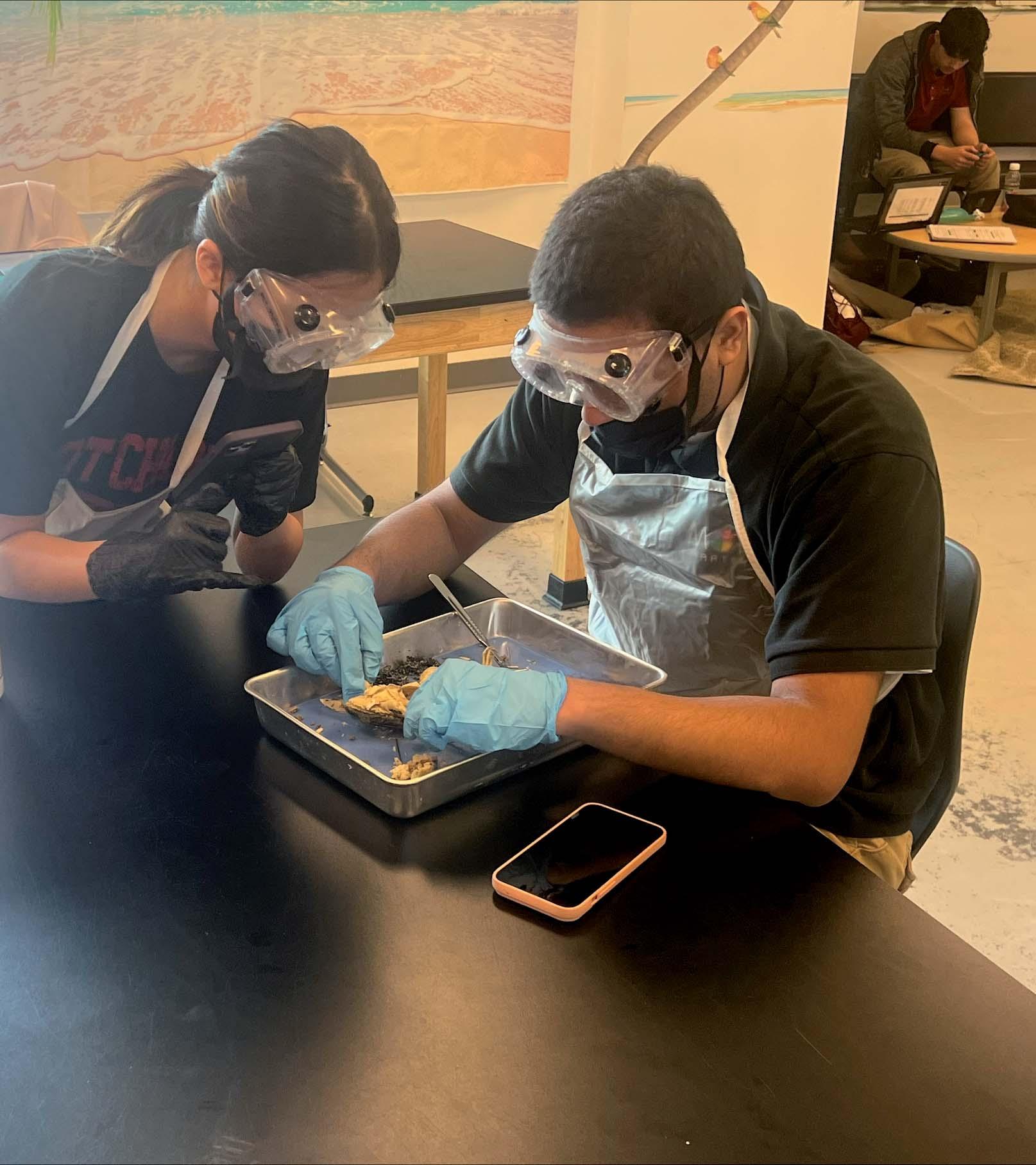
DID YOU KNOW: YOU CAN USE YOUR ELECTIVES TO MAJOR IN MORE THAN ONE STEM OR ARTS PATHWAY
This course is designed to introduce students to the science of biotechnology and examine the social impact of current biotechnology issues. Topics will include standard lab operating procedures, lab techniques, organisms used in labs, genetics and DNA, as well as the ethical, economic, environmental, political and historical impact of biotechnology on our society. This course is open to ALL students interested in science and biotechnology, and it also serves as the first course in the Biotechnology Career Pathway. All students will be encouraged to sign up and pay for participation as FFA as state and national members. Any research conducted during class time may be used in state competitions for Agriscience Fair or State Fair competitions. 1 Credit
This course is a continuation of Biotechnology 1 and geared for the sincere interest in science and biotechnology. This course will focus on how biotechnology is used in agriscience by using plants to represent dierent types of propagation techniques and comparing DNA isolation techniques. It will also introduce students to extraction of soil isolates to identify the bacterial species in a sample of soil. This course will also introduce students to the use of plants and microbes in bioproducts. The ethical, economic, and political impact of biotechnology will be included throughout the course. This course will continue to focus on students centered learning as they prepare and conduct their own research. Students will also learn how to manage and run a lab. All students will be encouraged to sign up for and participate in FFA as state and national members. Any research conducted during class time may be used in state competitions for Agriscience Fair or State Fair competitions. 1 Credit
Biotechnology III is the final chapter in the Biotechnology pathway and will introduce students how biotechnology plays a role in biomedical and forensic fields. Students will test and diagnose theoretical patients and suggest treatments for each patient based on results. They will also explore a mini-unit in Forensics with respect to biotechnology and solve mysteries along the way. As the last course in the pathway, majors will complete a capstone project. Non-majors taking this course will design and implement an independent study investigation with the guidance of the instructor. The lab work and research may be used as a continuation or as the development of the FFA project to be used in the State competition or State Fair. This work can also be used toward the development of internships or college scholarships in the form of a portfolio. 1 Credit
Gives students consistent experience in hands-on learning

The first computer science course includes an Introduction Computer Applications, a Wilmington University Dual Enrollment course, Exploring Computer Science© to introduce computer science concepts and computational practices; web design and robotics. Programming languages include Scratch and and an introduction to JavaScript using App Lab. 1 Credit
(Wilmington University – SEC290, 3 Credits)
Students further explore the seven key concepts in computer science with the AP College Board approved curriculum, Code.org. Students also complete Introduction to Computer Programming with Python, a Wilmington University Dual Enrollment course. This course will prepare students for the end-of-course AP Exam. 1 Credit
(Wilmington University – CSC100 & CSC240, 3 Credits each)
Students learn HTML5 & CSS3 and JavaScript. Students will produce and publish basic web sites using HTML/ CSS, forms, and tables. JavaScript is used for the programming logic incorporated into website browsers and apps. 1 Credit
Students learn object-oriented programming using Java. The emphasis is on problem solving and algorithm development with hands-on activities. This course will prepare students for the end-of-course AP Exam. 1 Credit
(Wilmington University – SEC100 & SEC210, 3 Credits each)
Students learn about the internal operations of personal computers along with troubleshooting, customer service skills and safety practices. This study then expands into learning the latest tips and techniques for computer security best practices to prepare for CompTIA certification. 1 Credit

This introductory course for all STEM majors provides fundamentals including a problem solving process (the Engineering Design Process) as well as project management, eects of technology on society, history of technology, patents, and other concepts. Through a project based learning approach, students are introduced to various Engineering fields such as Civil, Mechanical, Electrical/Electronic, Computer/Robotics, and Alternative Energy. 1 Credit
Engineering & Design II
An extension of Engineering I that requires a student to delve more deeply into the concepts of Engineering. Utilizing numerous projects and simulations, content focuses on Engineering Design such as, Structural Design, Elements of Design, and Foundations of Engineering Design. Additionally, students
complete a 3D Modeling unit with an introduction to 3D Printing, and learn the skills and knowledge principles involved with Project Management. 1
Credit
Focuses on advanced design applications for students who plan to continue their education in technical or engineering programs at a post-secondary level. Continuing the project based approach, provides an in-depth look into various Engineering technologies such as Manufacturing, Energy and Power, Construction, and Transportation. Students will conduct a major research project in Ocean Engineering and underwater technologies concluding with teams building an unmanned underwater robotic vehicle. Course concludes with a mini-capstone project. 1 Credit
Provides opportunity for advanced college and industry level coursework to helps prepare for entry into a rigorous college level Engineering program. All students complete courses typically required in college level Engineering curricula such as an industry level Computer Aided Design course, a Robotics curriculum with programming, an advanced Mathematical Analysis modeling program, and also complete a major team project that applies all the knowledge and skills learned in the previous 3 years of Engineering. Students have the opportunity to earn college level credits, industry certifications, and technical certificates of completion. Working with industry or subject matter experts, students choose and complete a reallife major engineering or technical project, simulating the process industry professionals use to manage major projects. 1 Credit
Engineering & Design V
Course is available only to students who complete an accelerated Engineering sequence by end of their junior year. Structured as a student self-designed independent study course that oers options such as, completing up to 4 foundational college Engineering courses for college credit, teaching lowerlevel Engineering topics, mentoring Engineering team projects, completing advanced industry certifications and taking on various leadership roles related to Engineering. Short term internship opportunities may also be available. 1 Credit
(Prerequisite: Completion of Engineering IV by end of Junior year and approval of Engineering instructor)
At the conclusion of freshman year, students may apply for the pre-medical minor. Over the next three years students have the opportunity to earn distinction at graduation by passing the courses listed below and completing an independent project. The senior year pre-medical project consists of a research project related to the medical field as well as a presentation and Q&A session with a panel of experts in the field. Pre-Medical Minor courses at MOT Charter:
Biology • AP Chemistry • AP Physics • AP Calculus AB
Additional Coursework Recommendations: In addition to the minor courses, MOT Charter oers additional opportunities to help give motivated students a competitive advantage in their pre-medical undergraduate applications; these are not required for the minor:
Calculus BC • Statistics • AP Literature & Composition • AP Language & Composition
Medical Terminology • Anatomy & Physiology (both are WVU Early College courses, additional costs apply) Students must meet application eligibility requirements and maintain minimum grade requirements to remain in the Pre-Mredical minor.

FUTURE MEDICAL PROFESSIONAL ASSOC.
This minor provides foundational coursework designed to help motivated students gain entry to, and be successful in, competitive undergraduate pre-medical programs.

“THE SUCCESS OF TELLING A STORY THROUGH DANCE LIES JUST AS MUCH IN THE EXPRESSIONS, PRESENTATION OF THE MOVEMENT, AND HOW DANCERS RELATE WITH OTHER DANCERS IN THE PIECE AS IT DOES IN THE MOVEMENT ITSELF.”
-
programs are designed to explore and develop the creative potential of students interested in performing and/or visual arts. Students will showcase their talents through portfolios, gallery exhibits, plays, shows, and club activities. In addition, ALL Arts Academy students complete, a minor concentration in Marketing (or Digital Media starting with the Class of 2027), to give artists the skills needed to successfully market and showcase their talents for college preparation and in the professional world.
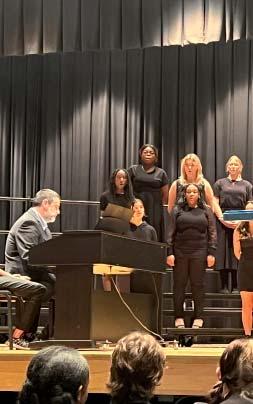

The course is designed to introduce the dance student to the fundamentals of ballet and other dance style techniques. Understanding of proper movement skills and building core strength through floor and barre techniques. The Dance I course is designed with specific exercises to enhance proper body placement, strength, flexibility, balance, musicality and movement coordination. Students will gain an understanding and an appreciation for dance as an expressive art form through a focus on the Elements of Dance. While the foundation of dance is in ballet, lyrical, jazz and modern dance are also explored. 1 Credit
This course is designed for the intermediate dancer and focuses on executing dance with more proficiency, strength and graceful qualities. Increased technique, personal growth in musicality and coordination. A focus on dance history and vocabulary are goals for this course. Exposure to additional dance styles and increased improvisation will be added to performance opportunities. Dancers will also have opportunities for master classes and dance workshops. Curriculum will cover all aspects of dance history, progression and artist interpretation of many genres. 1 Credit
Dance III is designed to build artistry in the intermediate/ advanced student. Once an established knowledge of history and technique is presented, students will begin to focus on self- exploration as a performing artist, while continuing to build a dance vocabulary. Stylings of noted choreographers and ballet variations will be a core focus in class. Students will begin to develop dance portfolios and resumes including auditions for college application. 1 Credit
With exploration in tap, hip hop, contemporary and other genres.
The curriculum is focused on building a performance opportunity from classroom study and exercises continued into a student run showcase. Portfolios will continue to be refined. 1 Credit
Dance 5 is an dance course for dancers with advanced technical skills. In this course we will continue to hone skills in ballet technique, as well as in contemporary, jazz, and modern. Dancers will create choreography to be performed during art expos. Dancers who take this course are required to compete dance 4 and require instructor go sign o. 1 Credit
Dance Elective is designed with a focus on tap, turns, tricks and leaps for the advanced dancer. Students in this class will focus on musicality, developing rhythmic patterns and Broadway style tapping. Proper technique application will allow for more complex turning combinations including fouèttes and a la secondè turns. Jumps and leaps will be executed at high proficiency. It is recommended that students have at least one year of dance technique in classic styling before selecting this course. 1 Credit

Introduces elements of design in a digital media realm as well as the creation and manipulation of electronic imagery. Students learn to import digital images; scan film, prints, and artwork; create and manipulate images; prepare images for use in web documents; and make archival inkjet prints with Adobe Photoshop. Visual thinking and communication are emphasized. Students learn to make composite artwork by working with masks and layers and to create a Web photo gallery and animated GIF’s in Photoshop. Adobe InDesign is introduced along with basic graphic design concepts. Students complete weekly lab assignments and produce a final portfolio of electronic and printed images. 1 Credit (Note: Only open to Digital Media majors & Freshman)
Course advances student’s capabilities by using Adobe Illustrator and Adobe InDesign, two professional graphic design programs. Understanding and skill levels will include more in-depth use of design elements and increased technical and aesthetic skills. As media design skills deepen, eye for detail and use of applications allows them to publish works which are growing to meet industry standard. Students combine words and images in print to provide real-world skills essential for graphic design and media manipulation careers. Students create and manipulate images, combine graphics and text, build page layouts and website designs. 1 Credit
Digital Media Design III focuses on the application of attained digital media design skills as well as the use of Flash and Edge Animate as students create, present and display their capstone portfolio project highlighting their cumulative body of digital arts work. Used for entry level job applications, college applications and required portfolios, final student work will be evaluated by a panel of career experts, teachers and peers. 1 Credit
This course will be the culmination of the foundations developed in the visual communication and storytelling skills needed for a career in the growing fields of photography, photo editing and retouching, and graphic, web, video, and motion design. Students will focus their last year on two specific projects within the art of Digital Media Design for collegiate and professional showcasing. Along with the projects, students will focus on four major research projects which directly relate to the two major projects. These research papers will help students prepare for collegiate level classes, as well as help build upon complex reading and writing skills. This course culminates by having a finished version of their web portfolio, which includes the projects created this year and exploring the visual design career options that interest them. 1 Credit

(Wilmington University – BMK305, 3 Credits)
Provides students with a foundational understanding of the principles of marketing. Students will learn how marketing facilitates customer preferences, link that knowledge to designing appropriate products and services for selected groups of customers, and determine appropriate methods to communicate, to deliver, and to capture value. Topics covered include the 4 P’s of marketing, ethics, market research, targeting and segmentation, consumer behavior, branding, positioning, digital marketing, social media marketing, and personal branding. Students will also develop a comprehensive marketing plan and analyze competition factors. Students will have the opportunity to participate in Business Professionals of America (BPA). 1 Credit
(Wilmington University – BMK306, 3 Credits)
Leverages learned foundational concepts to focus on the understanding and eective use of marketing strategies. Includes sales, advertising, and promotion activities through a scientific and numbers-driven approach. What are the numbers that matter and what are they really telling us? How can we best leverage big data and marketing analytics to optimize results? Course covers key concepts of social media marketing including experiential learning opportunities through Mimic Social. Students can continue t to participate in BPA. 1 Credit (Prerequisite: Marketing I, grade B or better)
(Wilmington University – BMK307, 3 Credits)
This Entrepreneurial and Corporate Marketing course explores the similarities and dierences between entrepreneurshipbased and corporate-based marketing. Students learn and apply communication strategies, problem solving, and critical thinking skills and how systems provide eciency in the workplace. Students explore and exhibit leadership and teamwork throughout work-based activities as it pertains to employment in both entrepreneurial (working within a startup) and corporate marketing careers. A course cornerstone is the annual Entrepreneur Fair where students develop, manufacture, and promote a product to sell for their personal profit. Students can continue participation in both BPA and the Junior Achievement Company Program. 1 Credit (Prerequisite: Marketing II, grade B or better)
(University of Delaware, Entre X Lab, 3 Credits))
Students complete a Capstone in a major or area of interest for college, and/or college audition/portfolio process. Capstone involves research, design, planning, interviews, production, and presentation of work for a panel evaluation. In partnership with University of Delaware’s Horn Entrepreneurship Center, studies also include the EntreX Lab. This dual enrollment course equips students to thrive amidst rapid change by cultivating agile thinking and developing problem-solving skills through hands-on experiences. Using immersive learning, students work an evidence-based entrepreneurship process, pursuing a novel idea for a new business or social venture. Students can continue participation in BPA. 1 Credit (Prerequisite: Marketing III, grade B or better)
Students examine the unique aspects of marketing within the sports industry, including sponsorship, branding, advertising, and fan engagement. Through case studies, projects, guest speakers, discussions, and potential marketing internship opportunities with youth sport organizations, students will gain practical skills and theoretical knowledge to succeed in this competitive field. 1 Credit (Prerequisite: Marketing III, grade B or better)
There are many ways students can get involved during their high school years. In addition to athletics and clubs, we have several honor societies which can deepen exploration of pathways and provide national opportunities. In addition, many of these organizations support students who are interested in volunteer connections to expanding their community impact.
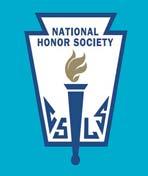
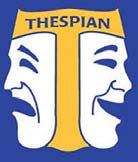
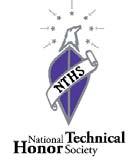


We are incredibly proud to receive both national and state-level recognition for the dedication and hard work of our students and sta.
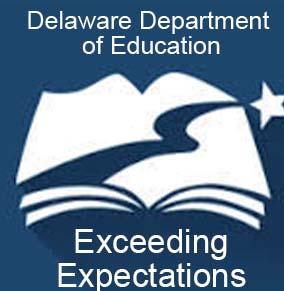




VOCAL & INSTRUMENTAL opportunities allow students to explore their artistic interests
Wind Ensemble is MOT’s concert band, which includes students who play woodwind, brass, and concert percussion instruments. This performance-based course develops advanced skills in instrumental technique, music literacy & theory, sight reading, and musicality through small group & large ensemble performances of music from diverse genres and cultures. Course explores composing & arranging, transposition, improvisation, and conducting. Students are required to perform in all MOT concerts, and may have opportunities for additional public performances. 1 credit each year
String Orchestra includes students who play violin, viola, cello, or double bass. In this performance-based course, students develop advanced skills in instrumental technique, music literacy & theory, sight reading, and musicality through small group & large ensemble performances of music from diverse genres & cultures. Course explores composing & arranging, transposition, improvisation, and conducting. Students are required to perform in all MOT concerts, and may have opportunities for additional public performances. 1 credit each year
Choir is MOT’s vocal ensemble, in which singers perform in a traditional SATB arrangement. In this performance-based course, students develop advanced skills in vocal technique, music literacy & theory, sight singing, and musicality through small group & large ensemble performances of music from diverse genres & cultures. Course explores composing & arranging, conducting, and vocal anatomy. Students are required to perform in all MOT concerts, and may have opportunities for additional public performances. 1 credit each year
Introductory course suited to students with little to no prior experience studying music theory or piano. Students learn fundamentals of music reading & writing, and use these skills to create & analyze original musical compositions. Piano is instructed at a beginner level, with accelerated options available for students with prior piano experience. 1 credit
Level 2 is a dual enrollment collegiate music theory course. Building on skills, students use advanced music theory concepts including harmonic progression, form, texture, and melodic devices to compose original works. Piano studies are largely self-paced and involve periodic in-class recital performances. By the end of this course, students are prepared for college music theory entrance exams and piano auditions. 1 credit
Music Theory/Piano 3*
Independent Study; Prerequisite: Music Theory/Piano 2; open to piano majors ONLY
Advanced level independent study course where students collaborate with instructor to design a self-guided study track for the year, which includes long-term composition and performance goals. Building on skills, students perform more complex repertoire and compose advanced original works. Level 3 piano students are required to perform in all MOT concerts, and may have opportunities for additional public performances. 1 credit
* Due to the nature of ensemble performance groups, these courses are dierent each year and therefore can be taken multiple times for unique credit. Majors must take 3 credits within their performance group to fulfill their pathway graduation requirement.
(Wilmington University – DRA105, 3 Credits)
Focuses on the foundations of theatre, acting and ensemble building. Units include Playwriting (in conjunction with the Delaware Theatre Company’s (DTC) Young Playwrights Festival), introduction to theatre games and improvisation, stage movement, pantomime, script analysis, theatre history, an introduction to technical theatre and a major unit on Shakespeare, focusing on “A Midsummer Night’s Dream”. All students must learn to be critical viewers of theatre, both in live and film forms, and will complete reviews each marking period, critiquing the eectiveness of all the elements of theatre as well as how the performance impacted the audience’s “willing suspension of disbelief.” A final One Act Play performance showcases what students learned through the year. 1 Credit
(Wilmington University – DRA110, 3 Credits)
Topics include character analysis, monologues, performing Shakespeare (with a focus on “Twelfth Night”), design (costume, set, etc), playwriting (in conjunction with the DTC’s Young Playwrights Festival), and continues study of theatre games and improvisation. Students complete reviews each marking period, critiquing the eectiveness of all elements of theatre and performance impact. Various acting techniques (Stanislavski, Meisner, Hagan, Adler, etc.) prepare students for character development studies. The year culminates in a one-act play production, encompassing acting and technical theatre skills. 1 Credit
Focuses on preparation for college auditions. Units include monologue preparation, character analysis, monologue and scene writing, performing Shakespeare, and theatre design. Students are required to read one play each marking period and present it to the class, along with a performance element requirement, with the intent of introducing their classmates to a wide realm of plays, styles, and time periods. A continued study of Theatre History will take place, including focusing on various theatre styles including Realistic Theatre, Theatre of the Absurd, and more. 1 Credit
Delve into the world of Musical Theatre! From Gilbert and Sullivan to Vaudeville students will see the change in theatrical styles both pre- and post-“Showboat”, and learn musical theatre history. Singing and dancing, as well as acting and scene study will be based in the musical format. Students will reflect upon the impact of theater through changes in technology, world events, various cultural influences, and societal changes. 1 Credit
Course of study includes lighting design, sound, set design, costuming, production budgeting, and more. Students will be required to work on at least one of the 2 mainstage shows in terms of tech or stage crew, and will work on these shows during class time, so a change of clothes may be required. 1 Credit

are continuing studies in college, starting their own acting businesses, and performing on stages nationwide

BROADWAY DREAMS provides performance training and mentorship opportunities from the entertainment industry’s most distinguished talents. MOT CHARTER students have been honored to host and learn from these amazing professionals!
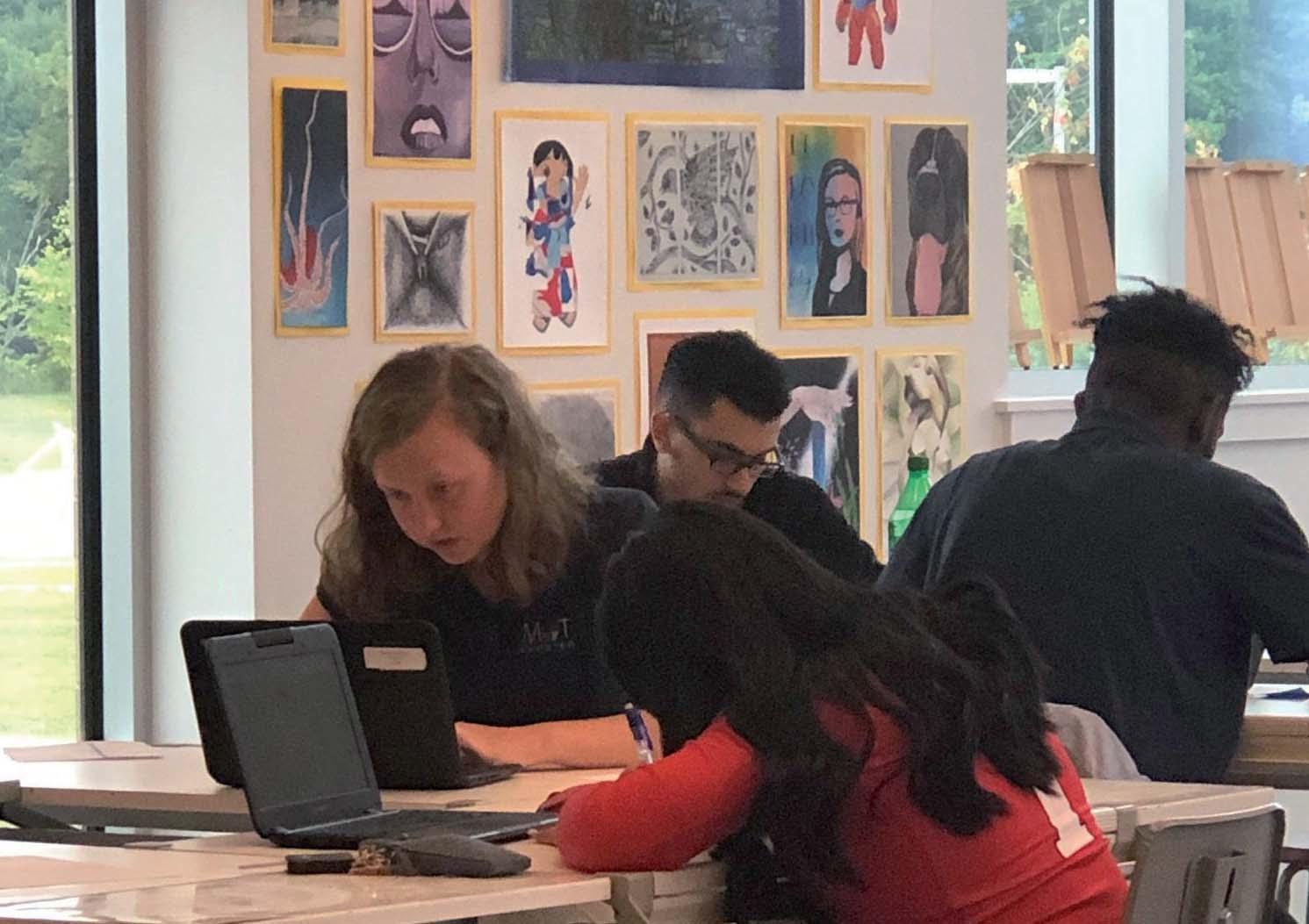
This course introduces students to the Elements of Art and Principles of Design while developing drawing skills and painting techniques. Studio experiences in the classroom will give students opportunities to experience a variety of media while developing student’s individual style and creative problem solving skills. Students will demonstrate their ability to respond, to analyze and to interpret their own artwork and the work of others through discussions, critiques, and writings. 1 Credit
Students are expected to become independent thinkers and to apply their knowledge of the elements and principles to their work in a variety of media (clay, wire, paper-mâché, found objects…) in order to demonstrate mastery of two and three-dimensional design skills and concepts. Students will demonstrate their ability to respond, to analyze and to interpret their own artwork and the work of others through discussions, critiques, and writings. 1 Credit
Intended for advanced art students who have completed Visual Arts I & II; course will incorporate the skills learned to investigate more thoroughly two-dimensional and three-dimensional projects. Students must show initiative and good work habits in addition to being interested in art. 1
Credit
Through more individualized instruction, greater independence, and an increased knowledge of media and techniques, students will continue to develop artwork that reflects a personal style and interpretation and build a portfolio. Further study of art criticism and aesthetics will continue in the curriculum. 1 Credit
Non-Visual Arts majors interested in this course must submit an application for acceptance.
Structured for beginner to intermediate artists, class begins with basic drawing exercises along with explaining drawing materials and how to use to maximum benefit. Students draw basic forms from a still life set up using direct lighting to more complex objects in order to help understand value. Instruction includes proper proportions, relationships, eye level and foundation perspective, line and values, direct lighting and cast shadows as well as soft and hard edges. Painting covers color mixing, paint application, selection and use of brushes and other painting tools, as well as painting composition. Students will use a limited color palette in order to learn how to mix a variety of colors. 1
Credit
Students interested in the Yearbook course must submit an application for acceptance.
Students work to produce a quality annual yearbook reflecting the pictorial history of the activities each school year. Using Photoshop, yearbook software and Excel, course includes:
• Develop a theme, determine story and photo ideas
• Design cover, end sheets & title page reflecting theme
• Create section master designs, type specs & graphic elements
• Create a workable ladder
• Set up story & photo assignments: “shoot to the shot”
• Sell advertising & organize book sales and distribution
• Edit content and finalize completed computer pages
• Establish and meet publication deadlines
Course includes instruction on using digital camera equipment as well as photography basics. 1 Credit



Students may select an embedded honors option, during the first marking period, for designated classes. In addition to normal class work, the honors option may require readings, advisory meetings, and/or supplementary assignments that delve deeper into topics covered. Students who elect to take honors credit should expect to spend extra time outside of class in addition to normal homework time. These students are generally held to higher expectations on assignments, participation, and contributions to class culture. If registered and after successful completion of an honors-level course, students earn an additional 0.5 quality point in the calculation of their GPA.
Students can earn college credit in designated classes starting in their freshman year. Dual enrollment courses are developed from original college course syllabi, including content, projects, assessments, and expectations, but are taught by our teachers. Students who wish to enroll in dual enrollment receive registration materials in the first few weeks of school. If registered & upon successful completion of a dual enrollment course, students earn college credits, which are generally transferable to other colleges. Dual enrollment registration is an additional fee.
Students can elect to take Advanced Placement (AP) courses, geared toward the respective AP exam. Courses align with College Board objectives and require significant levels of work inside and outside of the class meeting, including summer work. Students who earn a passing score on the AP exam may submit scores to the colleges for which they are applying & may receive college credit. AP exam registrations are an additional fee. Successful completion of an AP course will earn an additional 1.0 quality point in student’s GPA calculation.


STUDENTS seeking ADVANCEDLEVEL COURSEWORK have learning options which are not only academically challenging but may provide GPA or COLLEGE CREDIT advantages.
Each year, Junior and Seniors may use one elective class to take one pair of semester-long independent study early college courses. Successful completion a course earns a half credit toward their high school requirements AND credits as awarded by the college. Students are given one period in the day in which to work on these courses. Courses are taught by college professors via an online portal. If registered and upon successful completion, students will have earned college credits, which are generally transferable to other colleges. Additional fees and eligibility requirements are required to register for early college courses.
(Co-Requisite = IMP4 or higher math class)
Introduction to quantum computing oered by The Coding School in partnership with IBM and Massachusetts Institute of Technology (MIT). No prior quantum computing knowledge is required, but students should have a basic understanding of some trigonometry and geometry concepts (sine, cosine, and cartesian and polar coordinates). Weekly live lectures on Sunday afternoon (recorded for later viewing week), a one-hour required weekly discussion/lab section, and asynchronous work. Students have optional tutoring sessions and extra presentations to support learning; as well as guest speakers and career information from those in this field.
The course begins with necessary prerequisites to delve into quantum computation, such as linear algebra, trigonometry, computer programming, and physics concepts. The second half introduces foundational concepts including:
• Limits of classical computation
• Mathematics for quantum

• Quantum mechanics
• Quantum programming
• Quantum information
• Quantum algorithms
The course is a PASS/FAIL with a minimum grade of 70 to pass. Upon successful completion, students earn a certificate of completion from The Coding School. 1 Credit
The University of Delaware’s Early College Credit (UDECC) Program enables qualified students the opportunity to take University courses, simultaneously earning both high school and college credits. Courses are transmitted live from UD campus via interactive online streaming, giving students a true college classroom experience. Qualifying students enroll in the UDECC Program classes at no charge other than class materials.
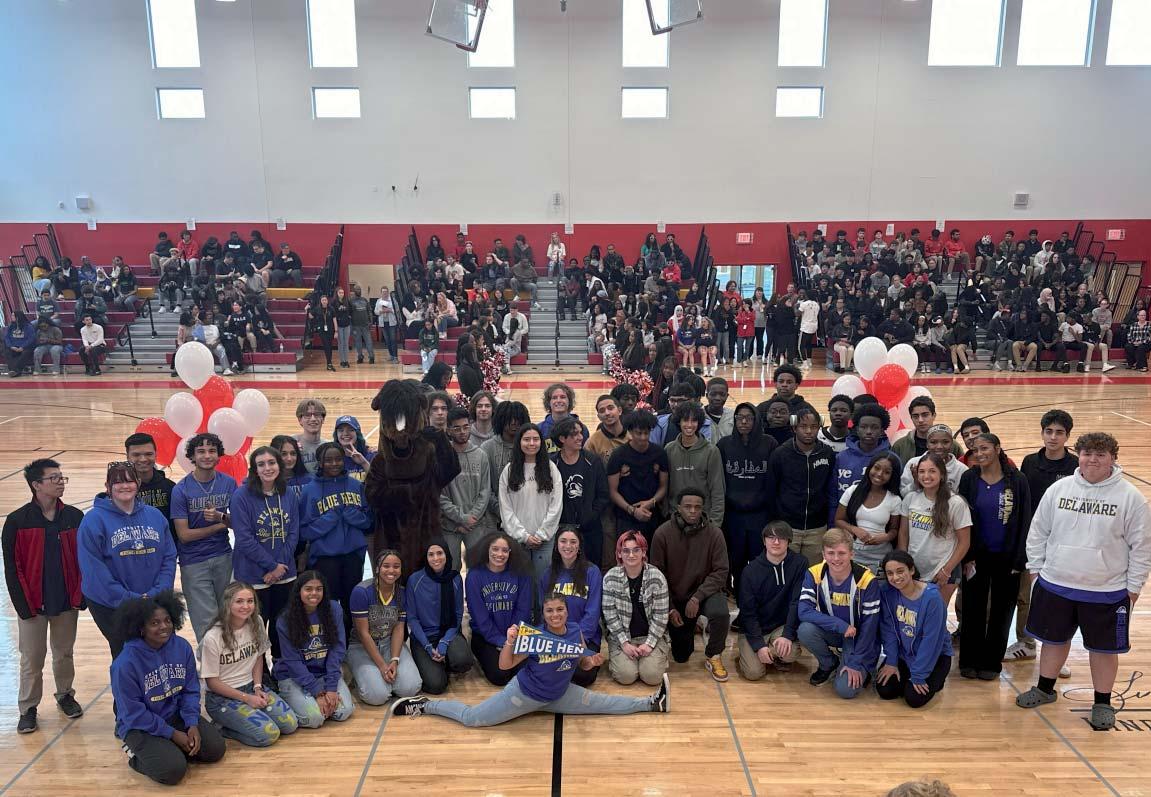
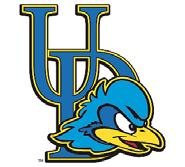
In order to be eligible for courses, juniors & seniors must hold at least a 3.60 GPA OR a minimum SAT/PSAT score of 600 in verbal and 600 in math OR grades over 90% in AP classes. Eligible students must also obtain parent/guardian & school counselor/principal permission.
Successful completion of each Early College course earns students three college credits (unless otherwise noted) through University of Delaware and a half credit toward high school requirements at MOT Charter School.
The relationship between media and culture; how media aects culture (i.e., socialization and role modeling); and exploration of new forms of mass communication.
Study of popular fiction (literary, cinematic, and/or multimedia); may focus on period, theme, single author, etc.
Public policy addresses contemporary issues and begins with you. Examines basic policy concepts/strategies used by citizens, government & other social institutions.
Study of causes and conditions determining women’s status in society, as evidenced in institutional structures and personal relations between men and women. Taught from multidisciplinary perspectives.
Overview of our foods today including how the composition, safety, processing and chemistry influence our choices and overall productions. The eects of social influences and marketing of foods will be discussed.
Current and historical media processes and their impact on art, design and culture. Image making and manipulation, video, audio, interactivity, and connectivity.
Explores ways we make,perceive, and experience images and artifacts.
Geological processes and events that adversely aect humans and civilization. Methods for predicting and dealing with geological hazards.
Explores the complexities of our contemporary world through the lens of history.
An introduction to all sides of the advertising field and to the process, quantitative, strategic, and aesthetic, by which the sales message is planned, produced, and delivered. ½ Credit
Introduction to the study of art history from prehistory to the present in which major landmarks of world art and architecture are considered as aesthetic objects, cultural documents, and within their socio-historical contexts. ½ Credit
Introduction to principles of communication in the one-tomany context. Emphasis is given to the creation and refutation of arguments. ½ Credit
Critical examination of mass media with special emphasis on ways in which social, economic, and psychological factors influence the structure, functions, & eects of the media. ½ Credit
Engineering problem solving methodologies and analysis. Use of computers in problem solving, technical report writing, teambased project work, and presentations. CO-/PRE-REQUISITE: Students must be taking or completed AP Calculus. ½ Credit
Impact of engineering on society throughout history. Developments in warfare, architecture, agriculture, manufacturing, communication, transportation, and their impacts on society. ½ Credit
A survey course in forensic science including the overview of the various scientific disciplines that handle crime scene evidence and the systematic method of evidence analysis. Students learn about the collection, preservation, and methods of analysis of biological, chemical, and physical evidence. FIS201 is the prerequisite for FIS 202. ½ Credit

Overview of the crime scene investigation process for the nonexaminer. Course topics include: safety, evidence collection, processing, and documentation. Virtual scenarios will serve as teaching aids. PRE-REQUISITE: Students must take and pass FIS201. ½ Credit
Composition and structure of the Earth and the physical processes that change Earth’s surface. GEOL101 is the prerequisite for GEOL 103. ½ Credit
Comparison and relationships of world regions. Geographical perspectives of contemporary global problems. Developing regions contrasted with modernized regions and the consequences of their interactions. ½ Credit
Evolution of the Earth and its inhabitants. PRE-REQUISITE: Students must take &pass GEOL101. ½ Credit
Nutrient structure, metabolism, integrated function, and their importance to human well-being during all stages of the life cycle. Current concerns and those of special interest to college students in meeting nutritional needs. ½ Credit
Introduction of history and development of American popular music. ½ Credit
Examination of music from various cultures (e.g. Native America, South India, Japan, Africa) within their cultural contexts. ½ Credit
Early College courses are taught by college professors via an online system, not by MOT Charter staff. Students work independently, using one junior or senior class elective period, to fulfill the requirements of these courses. Families can choose to pay for these online, elective courses at the reduced cost offered by the college/university through MOT Charter School. Successful completion of each Early College course earns three (3) college credits (unless otherwise noted) through West Virginia University and a half (½) credit at MOT Charter.
Course explores American musical theatre, one of this country’s primary contributions to world culture, covering its origins, components and its major creative figures. ½ Credit
Introductory human anatomy course that uses a combined regional & systematic approach to examine the relationships & organization of the major structures within the thorax, abdomen, head/neck, and back/limbs regions of the body. ½ Credit
General medical terminology with emphasis on clinical and anatomic pathology terminology. ½ Credit
An elementary examination of such philosophical problems as the mind-body, existence of God, freedom and determinism, and the nature of persons and their knowledge. ½ Credit
An examination of current moral problems. Topics include: abortion, euthanasia, sexism and sexual equality, preferential treatment, animal rights, sexual morality, pornography, economic justice, paternalism, punishment. ½ Credit
Elementary study of critical thinking and reasoning. For students who want to improve their skills in recognizing fallacious patterns of reasoning, constructing acceptable arguments, and criticizing faulty lines of reasoning. ½ Credit
General survey of American national government & politics.
Analysis of issues in post-cold war international politics, ranging from traditional major power diplomacy and intervention to the newer problems of economic interdependence and development, human rights, population pressures on limited resources, and the environment. ½ Credit
Oers an overview of the principles of human behavior. Developmental theories, psychophysiology, thinking, learning, personality theories, abnormal, and deviant psychology are introduced. Methods of assessment and research principles are discussed. ½ Credit
Course explores five of the most widely practiced world religions: Judaism, Christianity, Islam, Hinduism, and Buddhism. Students are introduced to the history and basic tenets of each faith. ½ Credit
Introduces students to the fundamental concepts and methods of the scientific study of group behavior in terms of social interactions and processes. ½ Credit
Essentials of human evolution and prehistory with a concentration on the varieties of languages and cultures found among peoples of the world. ½ Credit
Sociological analysis of the causes, eects and approaches to preventing & reducing social problems in American society. ½ Credit
Overview of science of conservation ecology with emphasis on the concepts of biological diversity, extension, habitat loss & fragmentation, establishment of protected areas, endangered species, & establishment & preservation of new populations. ½ Credit
Hands-on studio course for non-art majors, students will explore the use of both drawing and painting media. Learn to create works of art refined by a variety of skills and techniques to develop and express your individual artistic style. ½ Credit
Studies the double-entry accounting system, including: the accounting cycle, books of original entry, preparation of journal entries, worksheets, the trial balance, and statements of financial position and income. Emphasis is on the proper recording and reporting of assets, liabilities, equity, revenue, and expenses. ½
Credit
The world of business is a fast-paced and dynamic environment. Business owners today need to be skilled in dealing with diversity, promoting ethics and social responsibility, sustaining customer relationships, understanding the impact of government regulation on business, finance and accounting, marketing, information systems, and the importance of e-business. ½ Credit
Examines the human body and its major systems. Inc the chemical and cellular basis of life, along with tissues, the skeletal, muscular, nervous and endocrine systems. In this hands-on course, students will conduct dissections and perform experiments in laboratory conditions. ½ Credit
A survey of agencies and processes involved in the administration of criminal justice. The survey reviews the functions of the legislature, police, prosecutor, courts, and the correctional system. Problems of law enforcement in a democratic society are discussed. This course ties together all components of criminal justice and includes issues of both the juvenile and adult oender. ½ Credit
Emphasizes both macroand microeconomics for the non-business student. Basic economic concepts, tools and terms economists use, and methods of economic analysis are covered. A student’s understanding of the American
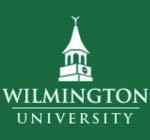
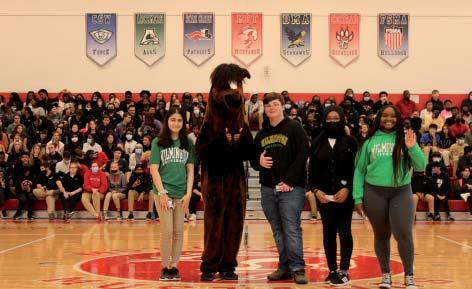
Courses are taken as one course during first half and another course during second half of the school year. Successful completion of each Early College course earns three (3) college credits (unless otherwise noted) through Wilmington University and a half (½) credit at MOT Charter.
FOR MORE INFORMATION: Contact the High School Front Oce.
business system is developed.
A study of the earth and atmospheric phenomena that result in weather. Weather theories, forecasting, dissemination, and applications of weather principles. Developments resulting from pollution of the atmosphere are examined. ½ Credit
Introduces the workflow needed to build playable games using the assets created in other areas of the Game Design and Development Program. Activities will include the creation of design documents and the development of playable prototypes. Key concepts in game design and development such as game world design, level design, level balancing, and game character development
will be addressed. Students explore limitations of game engines. Students also study and exercise production methodologies and practices utilized by development studios to create stand-alone gaming applications. ½ Credit
Covers all the software introduced in game program and beyond. Audio, video, programming, 3D, animation, game engines, and development methodologies will be introduced and explored. Students may wish to take this course if they want a comprehensive introduction to a wide range of software options, with practical applications to showcase those software functions. ½ Credit
Introduces the concepts of programming and scripting within a game engine. Primarily used to develop interactivity on web sites; for the purposes of this class, it will apply to the Unity game engine in order to create game/environment functionality. ½ Credit
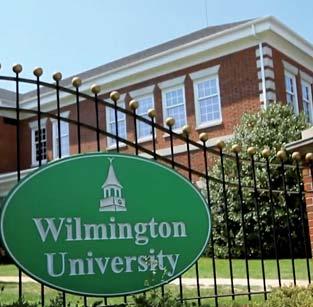
Studies artistic trends and developing technologies that have influenced creative work throughout Europe and America. Content focuses on relationship between design and art, as well as the artist’s role & influence on Western Culture and Society. ½ Credit
Focuses on the interactions between people and their regional environments and how those interactions produce distinctive places to live. Students will develop the ability to read maps, use an atlas to learn locations and characteristics of major regions and sub-regions of the world, and examine the eects of contemporary communication and transportation technologies of the global economy and the interconnection of people worldwide. An overview of human geography, political geography, and urban geography is included. ½ Credit
Increases the student’s comprehension and perception of music. Each developmental period will be discussed (Middle Ages, Renaissance, Baroque, Classical, Romantic, 1900-1945, and 1945-today) in terms of the historical background, social influences, characteristics, styles, composers, representative compositions, and performance media. Specific pieces of music from each developmental period will be analyzed based on the musical concepts found in the piece (pitch, dynamics, tone color, instrumentation, texture, form, etc.) ½ Credit

Students work independently, but use one junior or senior class elective period to fulfill the requirements of these Early College courses. Families can choose to pay for these online, elective courses at the reduced cost offered by the college/university through MOT Charter.
FOR MORE INFORMATION: Contact the High School Front Oce.
Course challenges students with the question: “Why do you think the way you do?” It gives practical consideration to overcoming thinking errors, developing ethical thought, and applying career-specific principles of eective critical thinking in real-life situations.
½ Credit
Introduces students to the fundamental concepts and methods of the scientific study of group behavior in terms of social interactions and processes. An introduction to social psychology, socialization, personal development, culture, and personality is oered.
½
Credit
Basic Photographic Techniques, TEC215
Challenges students with the question: “Why do you think the way you do?” Gives practical consideration to overcoming thinking errors, developing ethical thought, & applying career-specific principles of eective critical thinking in real-life situations.
½ Credit
Introduction to Audio, VMG101
Introduces principles of sound recording and sound design using analog and digital technologies. The aim is to provide the students with the skills necessary to set up and use current equipment and manipulate sound in order to maximize communication.
½
Credit
The MOT Charter School counseling program provides all students with a comprehensive school counseling curriculum with a focus on preparing students for postsecondary education. Students in all grades are encouraged and supported to take an active role in planning for their post-secondary goals. In addition to academic and college advising, MOT Charter High School counselors also provide counseling and support related to social and emotional needs.

Work begins to create a smooth transition from middle school to high school. Students explore topics related to time management, successful study habits, communication skills, online responsibility and school expectations on citizenship and community. In addition, they are encouraged to begin thinking about post-secondary pursuits through academic counseling and Naviance. Within the Naviance platform, students explore interests and researching college and career options. Freshmen may meet with their counselors for academic advisement or to address personal concerns.

Building on freshman year, counselors continue to support college preparation through academic opportunities and Naviance. Sophomores explore areas of interest related to majors, careers, and post-secondary options, including how to begin the college search process. Students take the PSAT/NMSQT in the fall and PSAT 10 in the spring. Sophomores may meet with their counselor for academic advisement or to address personal concerns.

Juniors continue to build on the foundational groundwork that was laid down for them in their freshman and sophomore years. Students continue to identify and match colleges with their interests and post-secondary goals. Juniors utilize Naviance Student in their college and career exploration process and are encouraged to engage with college admissions counselors through college field trips and in-house college admissions presentations. In the spring, all juniors take the school wide SAT. Parent/Student workshops and presentations related to the college process and the Naviance platform are provided. Juniors may meet with their counselor for academic advisement and/or personal concerns.
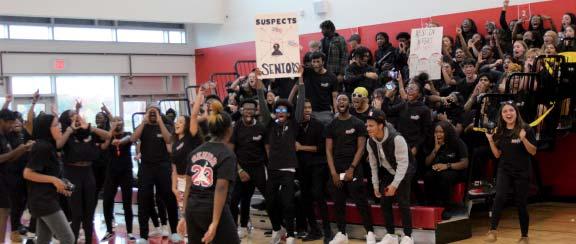
Beginning in the summer prior to senior year, students are encouraged to update all information in Naviance Student as preparation for submitting applications for college. Senior workshops and presentations are provided for students and parents to oer guidance and support through the college, scholarships and financial aid application process. Several community and state based organizations are brought in to provide additional support to students and families. Seniors have several check-ins throughout the year surrounding their application status.
Naviance Student is a web-based tool that helps students discover, explore and plan their college and career goals and options, and allows parents to be engaged in that process. Parents and students can use Naviance Student to:
Engage in the planning and advising process – Build a resume, complete online surveys, and manage timelines and deadlines for making decisions about colleges and careers
Research colleges – Students identify their college preferences in terms of size, location, major, etc., to generate a “match list” which shows how closely each match fits your student’s wants and needs. Easily compare admissions data, tuition, GPA, standardized test scores, etc.
Research careers – Research hundreds of careers and career clusters, and take career assessments. Students complete career assessments to help them discover more about their personality. They review results to help find the dierent types of career options, including job descriptions, task and activities performed in that career and expected wages.
Create plans for the future –Create goals and to-dos, and complete tasks assigned to you by the school to better prepare yourself for your future college and career goals.
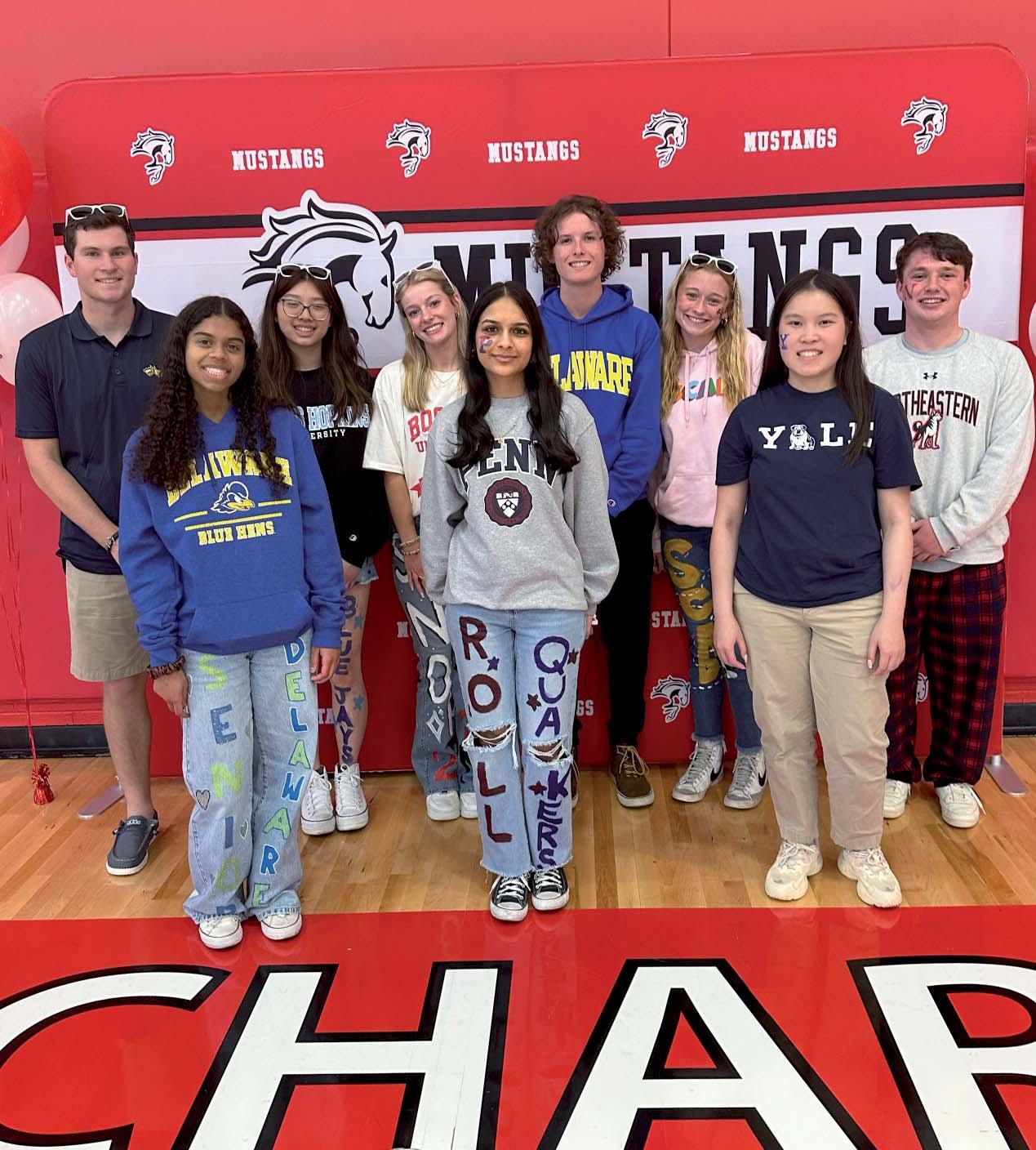
A student must earn a minimum of 28 credits, as outlined below, three of which must be in the student’s declared major pathway, to fulfill graduation requirements. The Academy Principal, as necessary, may resolve any discrepancies. MOT Charter High School requirements are set to exceed minimum state requirements while meeting college-preparatory requirements as outlined below:
History)
labs)
(at least college-prep.)
Adelphi University
Alabama State University
Albany State University
Albright College
Alfred University
Allegheny College
Allen University
Alvernia University
AMDA
American University
Amherst College
Anderson University
Andrews University
Anna Maria College
Arcadia University
Arizona State University
Art Academy of Cincinnati
Augustana College
Aurora University
Austin College
Babson College
Ball State University
Bates College
Bay Path University
Baylor University
Benedict College
Bentley University
Bethune-Cookman University
Binghamton University
Bloomsburg University of PA
Boston College
Boston University
Bournemouth University
Bowie State University
Brandeis University
Bridgewater College
Brookhaven College
Broward College
Brown University
Bryn Mawr College
Bucknell University
Caldwell University
California Northstate University
California University of PA
Campbell University
Capitol Technology University
Cardi Metropolitan University
Carlton College
Carnegie Mellon University
Case Western Reserve University
Catholic University of America
Cecil College
Cedar Crest College
Cedarville University
Champlain College
Chestnut Hill College
Cheyney University
Christopher Newport University
Clark Atlanta University
Clark University
Clarkson University
Clemson University
Coastal Carolina University
Colby-Sawyer College
Colgate University
College of Charleston
Colorado State University
Columbia College
Columbia University
Columbus College of Art and Design
Commonwealth University
Community College of Philadelphia
Coppin State University
Cornell University
Creighton University
Culinary Institute of America
CUNY Brooklyn College
CUNY City College
Curry College
Dartmouth College
Davidson University
Daytona State College
Dean College
Delaware State University
Delaware Technical &
Community College
Delaware
Valley University
Denison University
DePaul University
DeSales University
Dickinson College
Dillard University
Dominican University of CA
Drake University
Drew University
Drexel University
Duke University
Duquesne University
East Carolina University
East Stroudsburg University
Eastern University
Edinboro University of PA
Elizabeth City University
Elizabethtown College
Elmira College
Elon University
Embry-Riddle Aeronautical
University
Emerson College
Emmanuel College
Emory University
Fairfield University
Fairleigh Dickinson University
Fisher College
Flagler College
Florida A&M University
Florida Atlantic University
Florida Gulf Coast University
Florida Institute of Technology
Florida International University
Florida Memorial University
Florida Southern College
Fordham University
Franklin & Marshall College
Frostburg University
Full Sail University
Gannon University
Geneva College
George Fox University
George Mason University
George Washington University
Georgia Institute of Technology
Georgia State University
Georgian Court University
Gettysburg College
Goldey-Beacom College
Gordon College
Goucher College
Grace College and Theological Seminary
Grinnell College
Grove City College
Hamilton College
Hampden-Sydney College
Hampshire College
Hampton University
Harrisburg University of Science and Technology
Harvard University
Harvey Mudd College
Haverford College
Hawaii Pacific University
High Point University
Highlands College
Hofstra University
Hood College
Howard University
Illinois College
Illinois Institute of Technology
Immaculata University
Indiana University
Indiana University of PA
International Fashion Academy–Paris
Ithaca College
Jacksonville University
James Madison University
John Brown University
John Carroll University
Johns Hopkins University
Johnson & Wales University
Juniata College
Kean University
Kent State University
Kenyon College
Keuka College
Keystone College
King’s College
As a college-preparatory focused school, we are excited to celebrate the acceptances, listed below, of our seniors to schools worldwide. Those noted in Blue below indicate where our Mustangs chose for their post-secondary education pursuits.

Denotes Mustang student-athlete scholarship commitments
Kutztown University
La Salle University
Lafayette College
Lake Superior State University
Lasell University
LaSierra University
Lebanon Valley College
Lehigh University
Le Moyne College
LeTourneau University
Lewis University
Liberty University
LIM College
Lincoln University
Livingstone College
Longwood University
Louisiana State University
Loyola University Chicago
Loyola University Maryland
Loyola University New Orleans
Lycoming College
Lynchburg College
Lynn University
Macalester College
Manhattan College
Manhattanville College
Mansfield University of PA
Mary Baldwin University
Mary Immaculate College
Maryland Institute College of Art
Marymount Manhattan College
Marywood University
Massachusetts College of Art & Design
Massachusetts College of Pharmacy & Health Sciences
Maynooth University
McDaniel College
Mercer University
Meredith College
Merrimack College
Messiah College
Miami Dade College
Miami University
MICA
Michigan State University
Millersville University of PA
Misericordia University
Missouri State University
Monmouth University
Montclair State University
Moore College of Art and Design
Morehouse College
Morgan State University
Mount Holyoke College
Mount St. Mary’s University
Muhlenberg College
Neumann University
Neumont College
New England College
New Haven University
New Jersey City University
New Jersey Institute of Technology
New York Institute of Technology
New York University
North Carolina A&T University
North Carolina Central University
North Carolina State University
Northeastern University
Northwestern University
Notre Dame of MD University
NOVA Southeastern University
Oakwood University
Oberlin College
Ohio University
Ohio Wesleyan University
Old Dominion University
Oral Roberts University
Oregon State University
Pace University
Pacific Union College
Palm Beach Atlantic University
PA College of Art & Design
PA College of Technology
Pennsylvania State University
Pensacola State College
Pepperdine University
Pitzer College
Point Park University
Pomona College
Pratt Institute
Princeton University
Purdue University
Queens University
Quinnipiac University
Radford University
Randolph College
Reed College
Regent College
Regis College
Rensselaer Polytechnic Institute
Rhode Island College
Rice University
Rider University
Roanoke College
Robert Morris University
Roberts Wesleyan College
Rochester Institute of Technology
Rowan University
Russell Sage College
Rutgers University
Saint Edward’s University
Saint Elizabeth University
Saint Joseph’s University
Saint Leo University
Saint Louis University
Saint Peter’s University
Salisbury University
San Diego State University
Santa Clara University
Savannah College of Art and Design
School of the Art Institute of Chicago
Seattle University
Seton Hall University
Shaw University
Shenandoah University
Shepherd University
Shippensburg University
Siena College
Slippery Rock University
Spelman College
Southern Adventist University
Southern Connecticut State University
So. New Hampshire University
Spelman College
St Catherine University
St. John’s University
St. Mary’s College of Maryland
Stanford University
Stevens Institute of Technology
Stevenson University
Stockton University
Stony Brook University
Suolk University
State Univerrsity of New York
Brockport
Environ. Science & Forestry
Maritime University
New Paltz
Susquehanna University
Swarthmore College
Syracuse University
Temple University
Texas A&M University
Texas Christian University
The American University of Paris of Rome
The Citadel
The College of New Jersey
The College of Wooster
The George Washington University
The Ohio State University
The University of Arizona
The University of Iowa
The University of Oklahoma
The University of Tampa
The University of the Arts
Thiel College
Thomas College
Thomas Jeerson University
Towson University
Trinity College
Transylvania University
Truman State University
Tufts University
Tulane University
Tuskegee University
Union College
United States Military Academy at West Point
Universal Technical Institute
University College Dublin
University at Bualo
University of Alabama
University of Arizona
University of Bridgeport
University of California
Berkley
Davis
Irvine
Los Angeles
San Diego
University of Central Florida
University of Chicago
University of Cincinnati
University of Colorado. Boulder University of Connecticut
University of Delaware
University of Findlay
University of Florida
University of Georgia
University of Hartford
University of Hawaii at Manoa
University of Houston
University of Illinois at Chicago at Urbana-Champaign
University of Kentucky
University of Limerick
University of Lynchburg
University of Maine
University of Mary Washington
University of Maryland
College Park
Baltimore County
Eastern Shore
University of Massachusetts
Amherst
Boston
University of Miami
University of Michigan
University of Minnesota
University of Mississippi
University of Missouri
University of Montana
University of Nevada
University of New England
University of New Hampshire
University of New Haven
University of New Orleans
University of North Carolina at Chapel Hill at Charlotte at Wilmington
University of North Dakota
University of North Florida
University of Notre Dame
University of Oklahoma
University of Oregon
University of Pennsylvania
University of Pittsburgh
University of Puerto RicoMayaguez
University of Rhode Island
University of Richmond
University of Rochester
University of San Francisco
University of Scranton
University of South Carolina
University of South Florida
University of Southern California
University of Southern Maine
University of Tampa
University of Tennessee
University of Texas at Austin
University of the District of Columbia
University of Valley Forge
University of Vermont
University of Virginia
University of Washington
University of Wisconsin
Ursinus College
Valley Forge Military College
As a college-preparatory focused school, we are excited to celebrate the acceptances, listed below, of our seniors to schools worldwide. Those noted in Blue below indicate where our Mustangs chose for their post-secondary education pursuits.
Denotes Mustang student-athlete scholarship commitments
Vanderbilt University
Vassar College
Villanova University
Virginia Commonwealth University
Virginia Polytechnic Institute & State University
Virginia State University
Virginia Tech
Virginia Wesleyan University
Voorhees College
Wagner College
Wake Forest University
Walla Walla University
Wartburg College
Washington & Jeerson College
Washington & Lee University
Washington College
Washington State University
Washington University in St Louis
Wellesley College
Wentworth Institute of Technology
Wesleyan University
West Chester University
West Virginia State University
West Virginia University
Western Michigan University
Westminster College
Whitman College
Widener University
Wilkes University
William & Mary
William Paterson University
Williams College
Wilmington University
Wilson College
Wingate University
Winona State University
Xavier University
Xavier University of Louisiana
Yale University
York College of Pennsylvania


